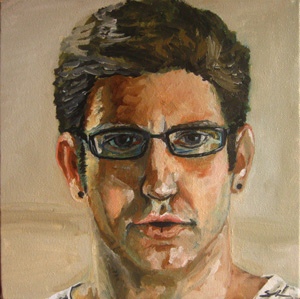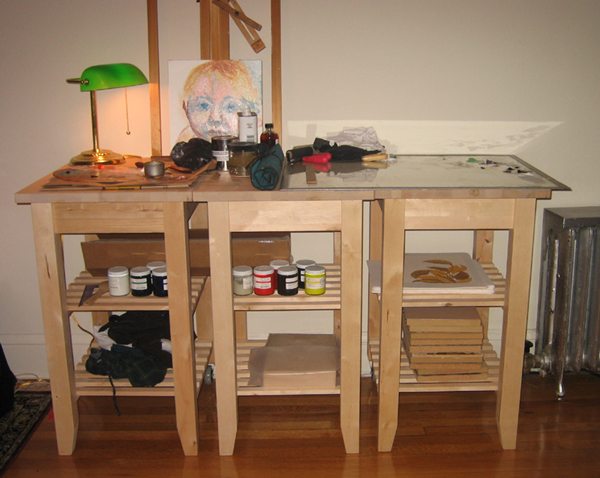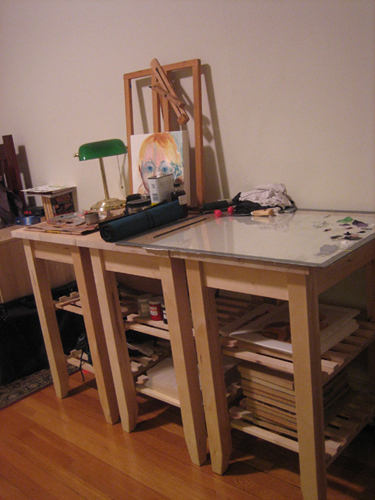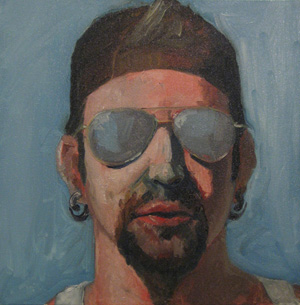I always return to painting self portraits.
There is certainly the practical reason. It is hard to find someone willing to sit in front of me for 6 hours at 10pm on Sunday night, but I always seem to be willing.
That’s not the complete story though.
I’ve never been much of an intellectual artist. When I make art as an intellectual exercise, or to express an intellectual concept, it falls flat. In my mind, intellectual art is better served by the craft of illustration, using line to exactingly express an idea, fact, or concept.
Art works for me when it comes from emotion. If you tie me down and force to tell you what art is, and I will tell you art is turning emotions into images.
I have a hard time expressing emotions. I don’t talk about how I feel, or write how I feel, it doesn’t work. I’ve been told I have walls to guard my emotions (in one of those delightful now-that-we-are-broken-up-i’ll-tell-you-what-i-really-think-of-you conversations).
Painting how I feel works, however. Imagery can represent how I feel in ways I don’t know how to communicate otherwise. This is, I think, why I make art. If you want to understand me, understanding my art will get you well over half way there. The art that best translates my emotions into an image is usually my best art.
Self portraits connect me back to the basic reason that I make art. When I stare myself down for hours at a time, I can’t avoid how I feel. This becomes the fuel for my self-portrait paintings. The paintings themselves don’t always hold the charge of emotion, but the process does.
I whipped out this painting you see here on the left because I felt stuck. (Being stuck seems to be going around.) I wasn’t sure what I should be doing with my art, or where I want to take it. I had no idea what images to make.
I’ve had some ideas, but nothing that really gets to the heart of what I mean to do. One of my recent “good ideas” involved roly polies. The other involved my truck. Not exactly high impact. I had decent reasons for these ideas though. Kinda.
As I worked on this painting, I was able to wrap my head around my art, and what I should be doing with it. I rediscovered what is important to me, and I have an idea which direction to move in, even if I don’t know how exactly it will show up in my art.
I know I can revisit self portraits when I need a kick in the right direction, or to figure out what is going on inside. It works.



